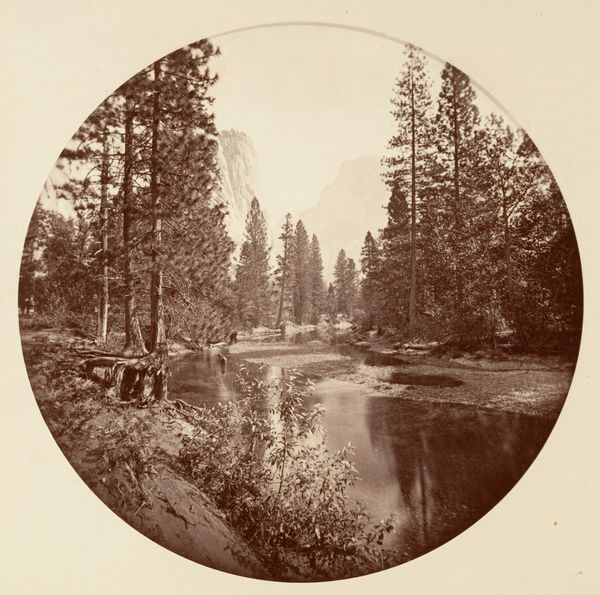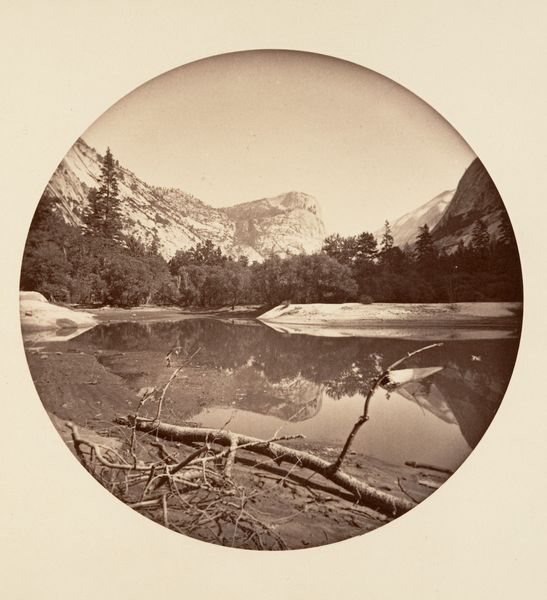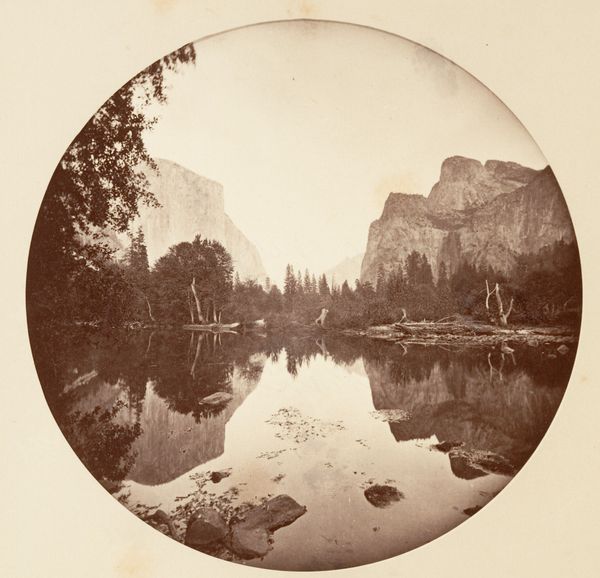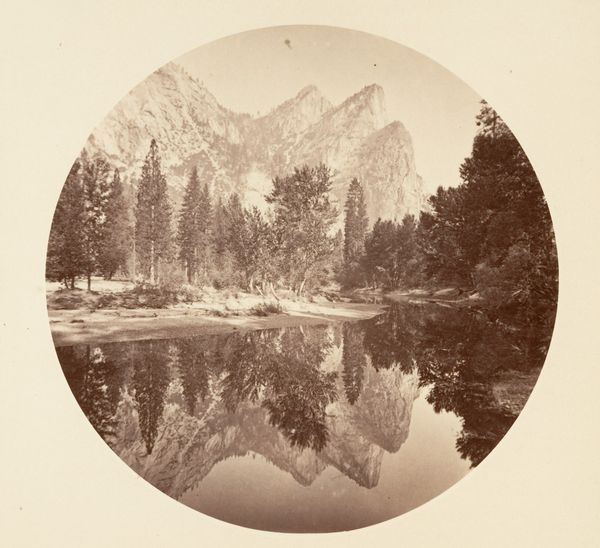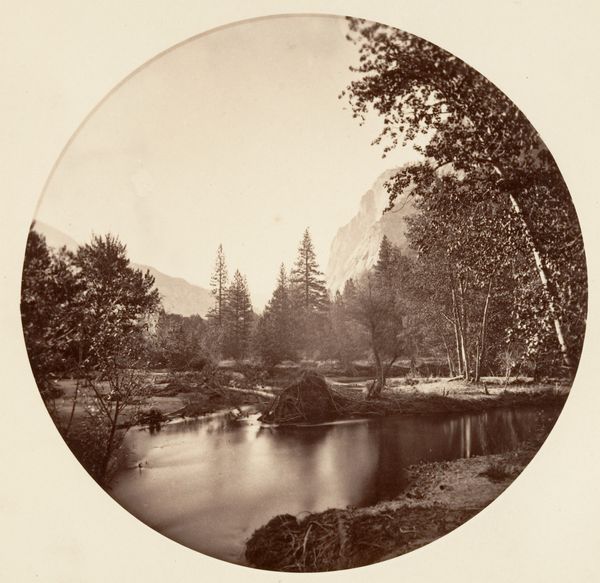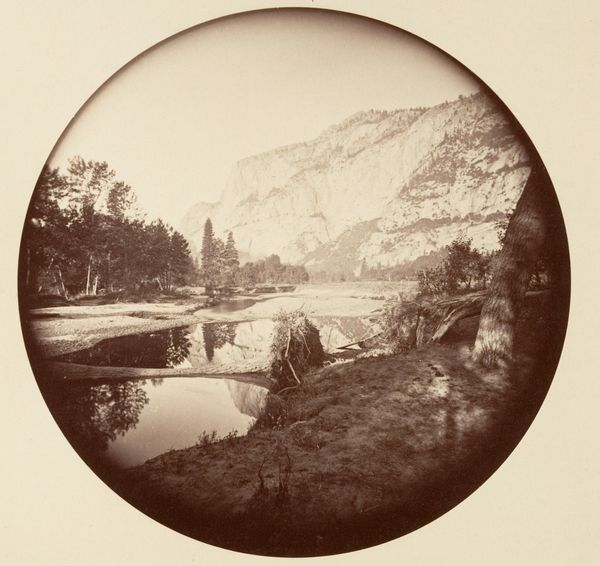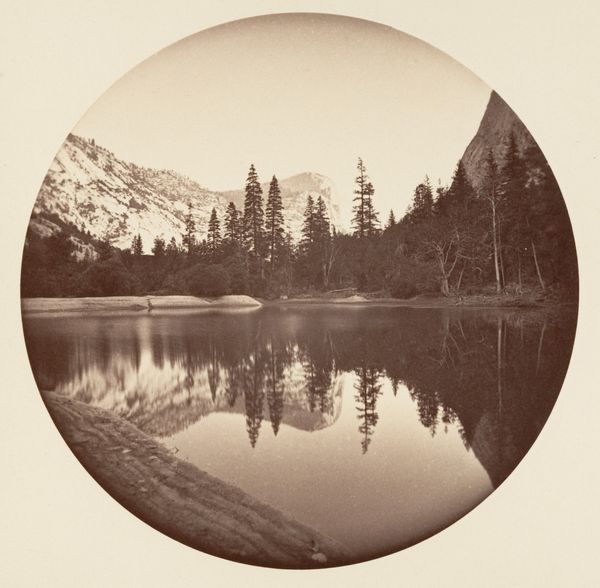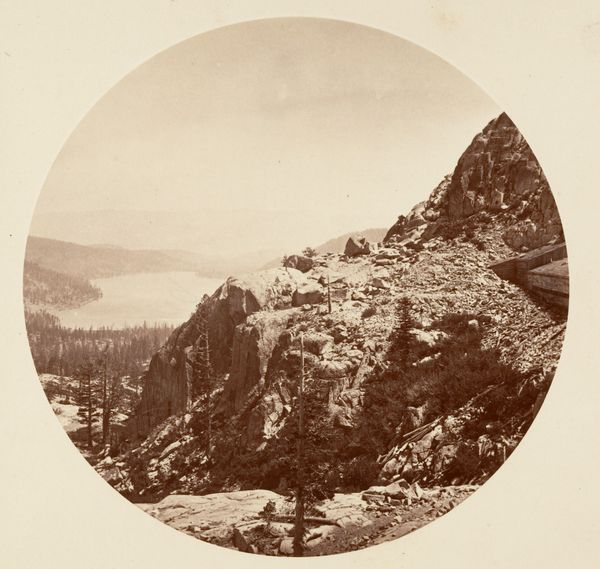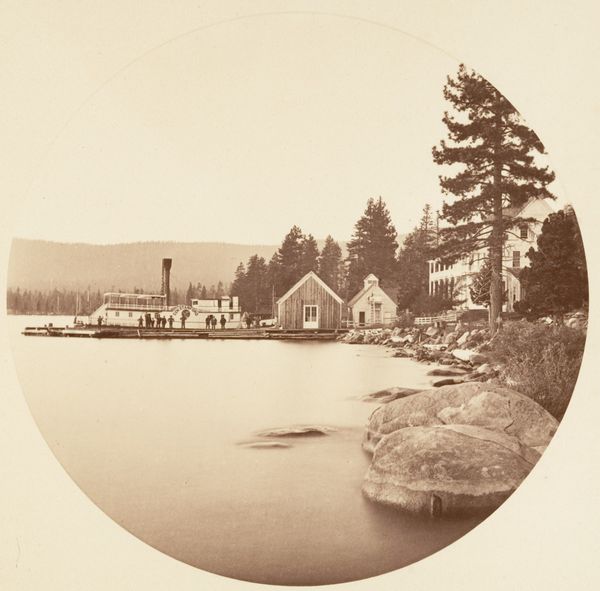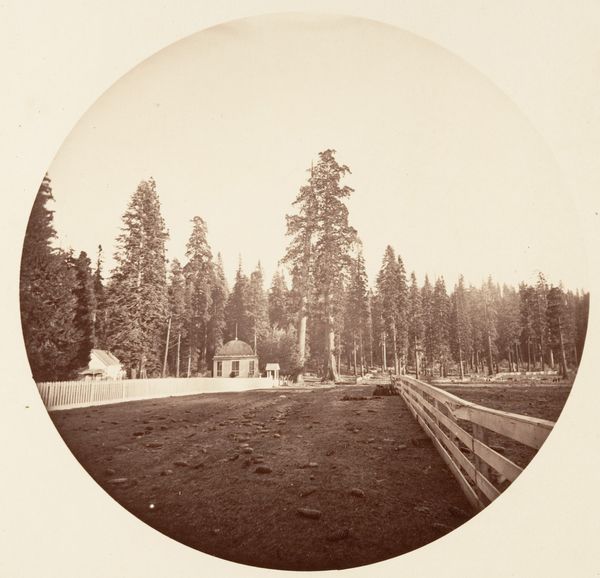![[Yosemite National Park, California] by Carleton E. Watkins](/_next/image?url=https%3A%2F%2Fd2w8kbdekdi1gv.cloudfront.net%2FeyJidWNrZXQiOiAiYXJ0ZXJhLWltYWdlcy1idWNrZXQiLCAia2V5IjogImFydHdvcmtzL2M2NjZiMTI5LTM1ODAtNDNiYS1hZTU3LTVmZTJlZGM0YmUzYy9jNjY2YjEyOS0zNTgwLTQzYmEtYWU1Ny01ZmUyZWRjNGJlM2NfZnVsbC5qcGciLCAiZWRpdHMiOiB7InJlc2l6ZSI6IHsid2lkdGgiOiAxOTIwLCAiaGVpZ2h0IjogMTkyMCwgImZpdCI6ICJpbnNpZGUifX19&w=3840&q=75)
Dimensions: Image: 12.5 x 12.5 cm (4 15/16 x 4 15/16 in.), circular Album page: 24 x 25.1 cm (9 7/16 x 9 7/8 in.)
Copyright: Public Domain
Curator: This photograph, entitled "[Yosemite National Park, California]," was taken between 1876 and 1880 by Carleton Watkins. It's an albumen print, and it presents such a beautifully still, self-contained scene. Editor: My first impression is how remarkably calming it feels. The tonal range is subtle, nearly monochromatic, with this mirrored surface of the lake acting almost like a canvas in itself. There's such a tangible stillness about it, a sort of meditative silence. Curator: The photograph is presented in a circular format, almost like a window or a peephole into a pristine wilderness. This round framing seems to evoke an early photographic process and immediately suggests both looking back and, I think, at symbolic wholeness. We are invited to contemplate a perfect natural microcosm. The lake is almost a sacred mirror here. Editor: Yes, and the composition cleverly guides the eye. We have that boat in the foreground – abandoned or simply waiting? – which grounds us. From there, our vision moves across the reflective plane of the lake towards the densely packed trees, eventually resting upon the distant, muted mountain range. It’s a classic recession into space, drawing on principles used in painting to create depth, even though it's photographic. Curator: Watkins was deeply involved with capturing the American West, solidifying the symbolic meaning of the landscape in national identity. In this photograph, Yosemite serves as an emblem of untouched beauty, resonating with ideas of Romanticism and Transcendentalism and imbuing nature with spiritual significance. A boat becomes not merely an object, but the very image of human passage through a natural world of awe. Editor: It's interesting how the Romantic ideal meshes with Realism here, producing something entirely new. You are spot on. Though grounded in factual observation – note the detail in the trees' reflections, the texture of the rock face on the right – the choice of lighting and composition leans into something more… idealized, perhaps? The almost sepia tones give it the patina of memory. Curator: Exactly, it's less about the absolute truth of place and more about how memory, nostalgia, and idealisation intertwine, imbuing it with something timeless. I think this artwork reveals the powerful and complex relationship people forge with nature through symbolic representation. Editor: For me, the lasting appeal stems from the work's internal logic: a balanced play of light, reflection, and form, contained in an almost dreamlike field. Ultimately, this photographic rendering becomes a potent artifact in its own right.
Comments
No comments
Be the first to comment and join the conversation on the ultimate creative platform.
